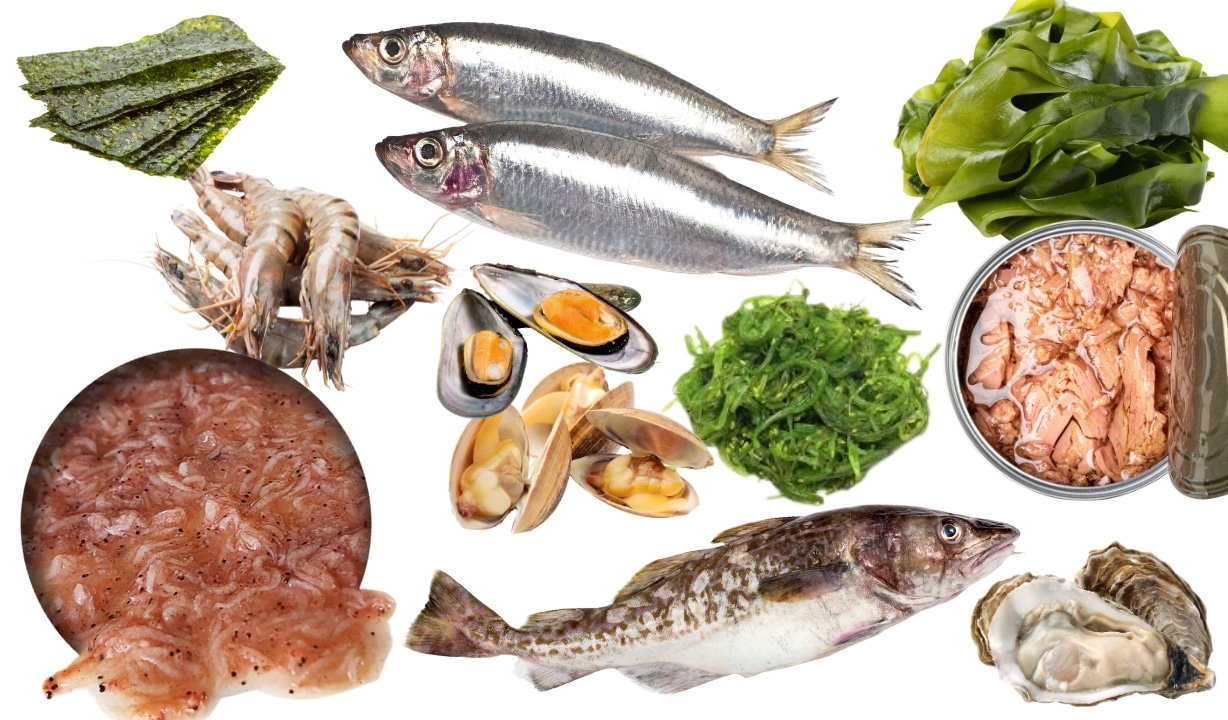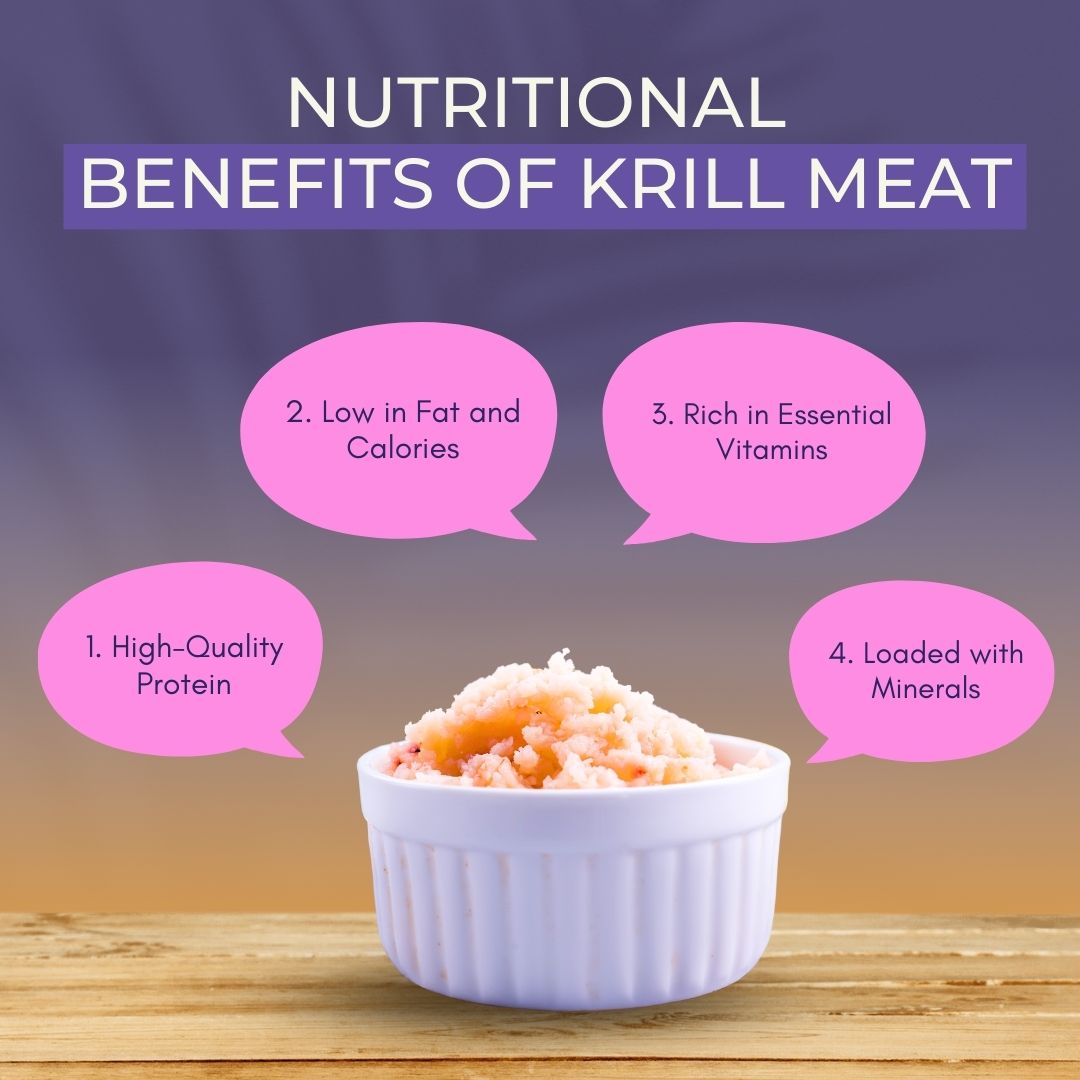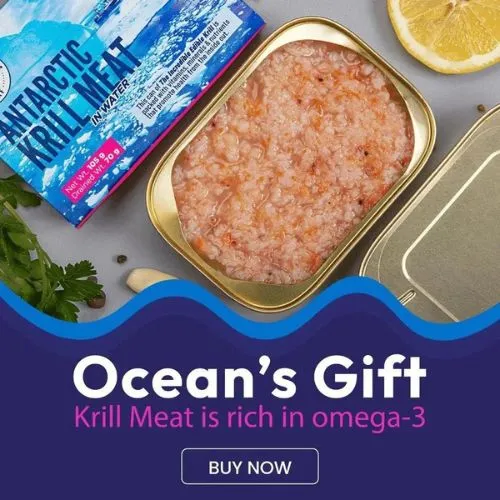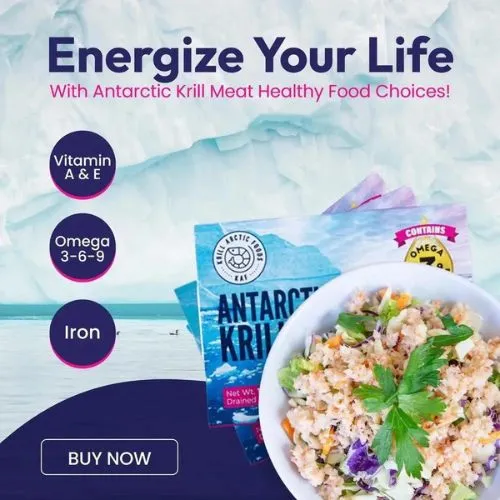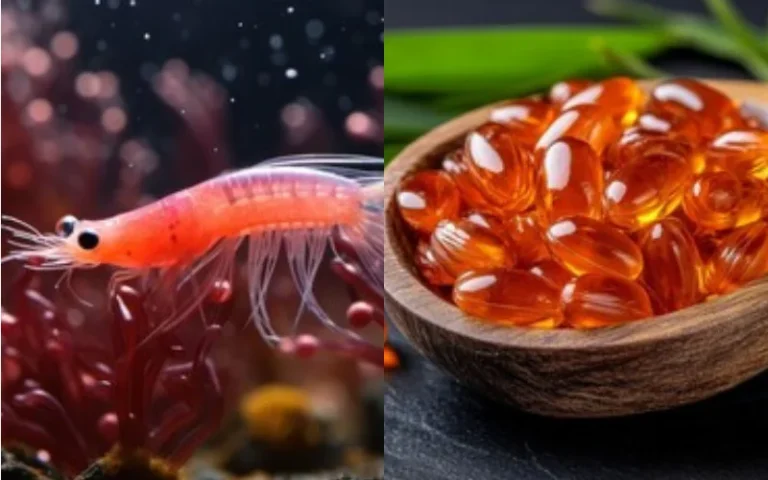Iodine controls how fast your body burns energy, how warm you feel and even how clearly you think. And if your levels are low, your metabolism slows down, your focus slips and your thyroid the small gland in your neck that runs the whole show starts falling behind.
You don’t need pills or powders to get enough iodine. The ocean’s already done the heavy lifting. Top seafood rich in iodine offers some of the best natural sources of this essential mineral, and the variety is surprisingly wide, from everyday fish to tiny crustaceans like krill.
Seafood isn’t just low in calories and high in protein it’s one of the easiest, cleanest ways to get this essential mineral back into your system without changing your whole diet.
So read on, because this guide will walk you through the top kinds of seafood packed with iodine, how much you actually need and how to include them in your meals without overdoing it.
Iodine: An Essential Mineral For Health
Iodine is an essential trace element crucial in maintaining healthy thyroid function. Think of iodine as fuel for your thyroid. This small gland in your neck controls how your body uses energy and without enough iodine, it can’t make the hormones that keep your metabolism, heart rate and body temperature in check.
Your body doesn’t store much iodine, so you need a steady supply of food. If you fall short, your thyroid has to work harder, leading to swelling (called a goiter), fatigue, weight gain and trouble concentrating. Low iodine can also affect a baby’s brain development in pregnant women.
So, how much do you need? According to the FDA, the Daily Value (DV) for iodine is 150 micrograms (mcg) per day for both adults and children over the age of four. It’s even more so during pregnancy or breastfeeding. Since your body doesn’t make iodine on its own, getting it from your diet, especially through seafood, makes a big difference.
Seafood: A Natural Source of Iodine
Not all foods are created equal when it comes to iodine and seafood stands out for a reason. Oceans naturally contain iodine and marine life absorbs it from the seawater. That means fish, shellfish, seaweed and even tiny crustaceans like krill often carry higher levels of this essential mineral than land-based foods.
Another big advantage? Your body absorbs iodine from seafood more efficiently than from many plant sources or even some fortified foods. It’s naturally available in a form your thyroid can use immediately, without needing extra steps to process it.
So if you’re trying to raise your iodine intake naturally, seafood isn’t just an option it’s one of the most reliable and practical sources you can eat.
Top Seafood Rich in Iodine
Here are top seafood choices that can help you meet your daily iodine needs
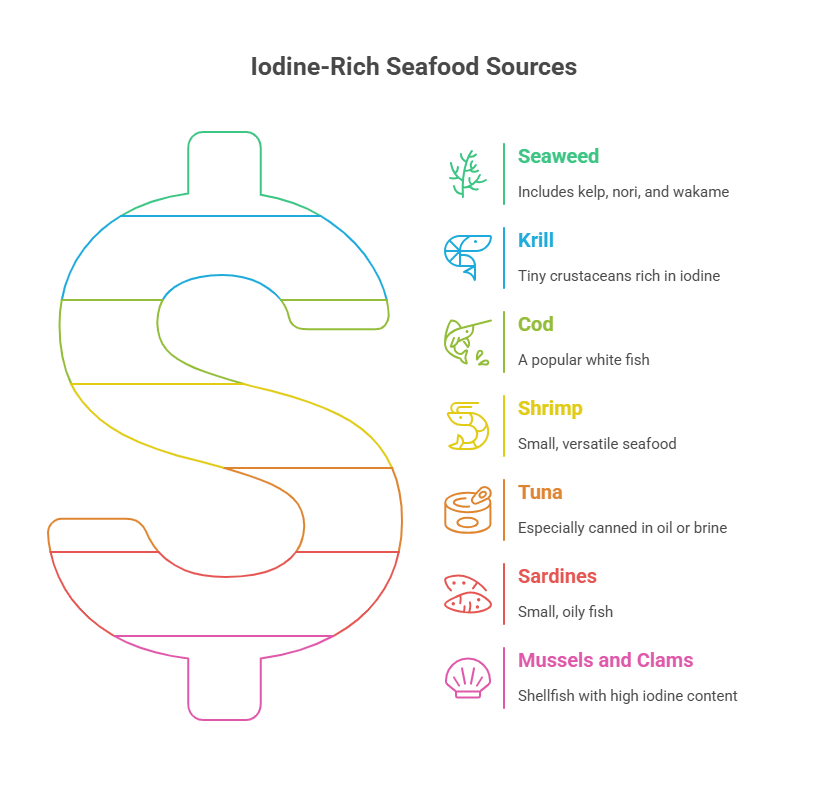
Seaweed (Kelp, Nori, Wakame)
Seaweed is by far the most iodine-rich food on the planet. Just one gram of dried kelp can give you several times the daily recommended amount. But more isn’t always better too much iodine can cause thyroid issues, too. A little goes a long way, especially with kelp and kombu. Nori and wakame have lower levels, making them a safer choice for regular use. Estimated iodine per serving:
- Kelp (1g dried): 2,000+ mcg
- Nori (1 sheet): 16–43 mcg
- Wakame (1 tbsp dried): 80 mcg
Krill
Small but mighty, krill are rich in iodine and omega-3 fatty acids. One of Krill’s big advantages is sustainability. They’re low on the marine food chain and reproduce quickly, making krill a more environmentally friendly option than overfished species. Plus, because they live in cleaner, colder waters, krill tend to have lower levels of mercury and other contaminants often found in larger fish. The estimated iodine per 3 oz cooked is approximately. 90 mcg
Cod
Cod is a lean white fish with a clean flavor and a solid dose of iodine. It’s easy to cook, low in fat and mild enough for picky eaters. Wild-caught Atlantic cod tends to have more iodine than Pacific varieties. Estimated iodine per 3 oz (85g) cooked: 99 mcg
Shrimp
Shrimp aren’t just high in protein; they also contain a good amount of iodine and other essential minerals like selenium. They’re quick to cook and fit into everything from stir-fries to salads. A 3-ounce (about 85-gram) serving of shrimp can contain 20% to 35% of the recommended daily intake of iodine, depending on the species and its environment.
Tuna (Especially Canned in Oil or Brine)
Tuna is convenient, budget-friendly, and shelf-stable. Canned tuna, especially in brine or oil, can retain more iodine than fresh, depending on how it’s processed. It’s also a good source of lean protein and omega-3s. Per 3 oz of tuna are 17–35 mcg of iodine.
Oysters
Oysters are nutrient-dense and rich in iodine, zinc and vitamin B12. They’re one of the best all-around seafood picks if you’re looking to boost thyroid and immune health. An estimated six medium oysters give approximately 93 mcg of iodine.
Sardines
Sardines offer moderate iodine and are loaded with healthy fats and calcium, especially if you eat them with the bones. They’re great on toast, salads or straight from the can. The estimated iodine per 3 oz is 35 mcg.
Mussels and Clams
These shellfish offer a great balance of iodine, protein, iron and B12. They’re also more affordable than other seafood and cook fast in soups, kinds of pasta or garlic butter. Estimated iodine per 3 oz cooked:
- Clams: 84 mcg
- Mussels: 60 mcg
Other Nutritional Benefits Beyond Iodine
In addition to iodine, seafood offers a range of nutrients that contribute to overall health:
- High-quality protein with very little fat.
- Omega-3 fatty acids, which support heart and brain health.
- Vitamins and minerals like vitamin B12, selenium and zinc.
- Low in calories, making them a good option for weight-conscious diets.
- Astaxanthin is a natural antioxidant that gives shrimp and krill their pink color and supports eye health, skin quality and recovery from oxidative stress.
How Iodine From Seafood Helps Your Body Run Better
Iodine isn’t just a background mineral it plays a hands-on role in how you feel, think and move every day. Getting it from seafood is a simple way to get it without overcomplicating your meals.
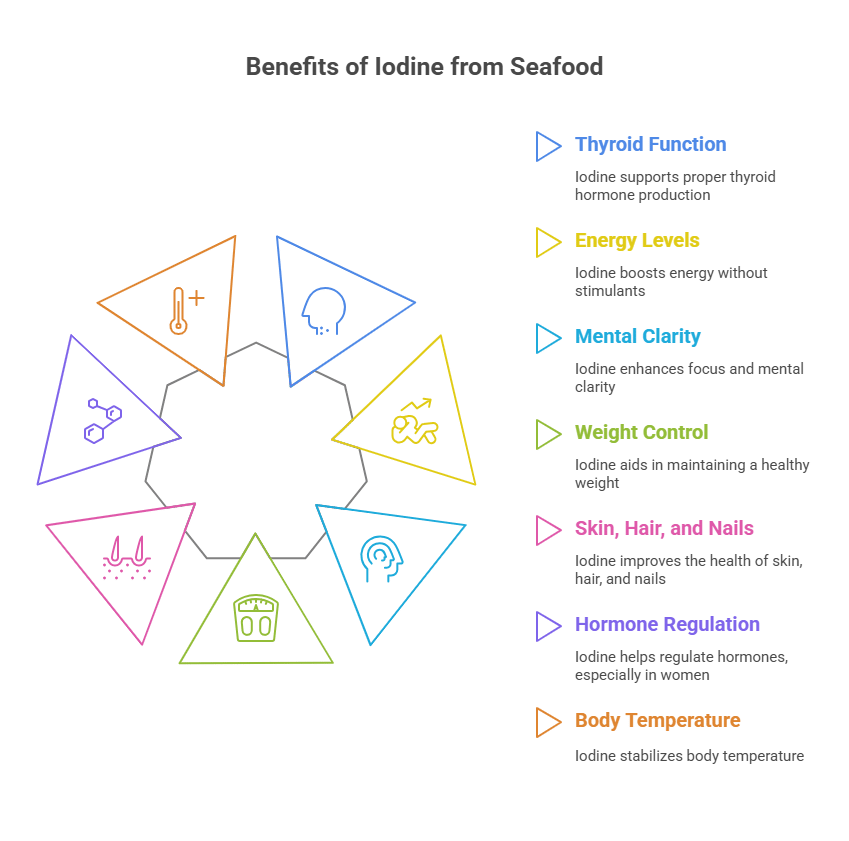
Keeps Your Thyroid Working As It Should
Your thyroid is your body’s control center for energy. It uses iodine to make two key hormones T3 and T4. These hormones tell your body how fast to burn calories, how warm to stay and how to use nutrients. Without enough iodine, that system starts to stall. Iodine from seafood helps keep it running at full speed.
Boosts Energy Without Stimulants
Low iodine often shows up as low energy. You might feel tired even after sleeping or drained after small tasks. That’s because your cells aren’t producing enough energy. Iodine helps turn food into fuel. Seafood gives you a steady supply of no caffeine needed.
Supports Focus and Mental Clarity
Iodine isn’t just about the body it affects the brain too. When your thyroid is balanced, your mind feels sharper, your mood steadier and your memory stronger. This could be part of the fix if you’ve been dealing with foggy thinking.
Helps With Weight Control
A slow thyroid from low iodine can make it harder to lose weight, even with good habits. By supporting your thyroid, iodine helps you burn more calories at rest and keeps your metabolism from dragging. Seafood gives you a boost without adding junk or extra carbs.
Improves Skin, Hair, and Nails
Dry skin? Hair thinning? Brittle nails? These can all be traced back to thyroid issues caused by low iodine. Getting enough from seafood like krill can support healthier skin and stronger hair over time.
Helps Regulate Hormones (Especially for Women)
Hormonal swings aren’t just a mood issue they can affect everything from sleep to cravings to cycle regularity. Iodine helps stabilize hormones by keeping your thyroid and the rest of your endocrine system in sync. This can be especially helpful for women during pregnancy, postpartum, or perimenopause when iodine needs to rise.
Keeps Your Body Temperature Stable
Always cold, even when the room isn’t? That’s a common sign of low thyroid function. Iodine helps regulate thermogenesis, the body’s ability to generate heat. When your thyroid has what it needs, your internal “thermostat” works better and so do you.
How to Include Seafood in an Iodine-Rich Diet
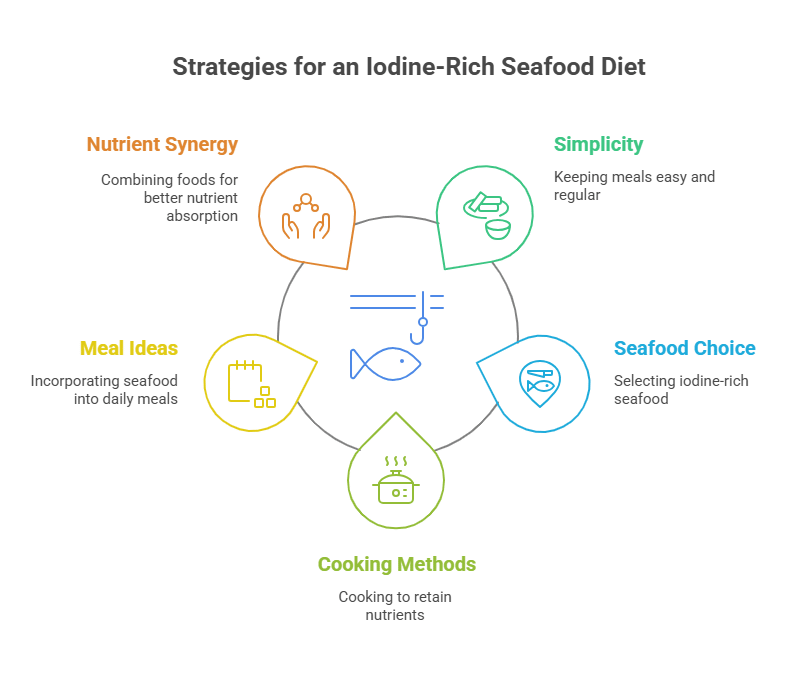
Seafood makes it easy to get more iodine no strict meal plans or complicated prep required. Whether cooking for one or feeding a family, there’s a way to add seafood to your week without repeating the same boring dish.
Keep It Simple and Consistent
You don’t need to eat fish or krill every day. Just two to three servings a week can help you meet your iodine needs. That’s about 6 to 9 ounces total. Spread it across meals and you’ll keep your thyroid supported without overthinking it.
Choose the Right Kind
Both wild-caught and farm-raised seafood contain iodine but wild might carry a little more, depending on where they’re from. Look for options labeled
- Wild-caught (especially Gulf or Pacific).
- Sustainably sourced.
- Frozen raw or precooked with no added sauces or breading.
Avoid heavily processed versions that come with extra sodium or chemicals they cancel out the benefits.
Cook Smart, Keep Nutrients
Iodine can break down with overcooking, so try quick, gentle cooking methods like
- Sautéing with olive oil, garlic and lemon
- Steaming with herbs
- Grilling on skewers
- Stir-frying with fresh vegetables
- Boiling briefly for salads or pasta
Don’t cook them until they’re rubbery just until they turn pink and curl.
Easy, Everyday Meal Ideas
Here are a few go-to ways to use seafood without repeating the same dish:
- Krill tacos with cabbage slaw and lime.
- Garlic butter shrimp over brown rice or quinoa.
- Seaweed salad with avocado and citrus dressing.
- Codfish and veggie stir-fry with tamari or coconut aminos.
- Spicy grilled tuna skewers with sweet potatoes.
- Oyster soup or curry with a coconut milk base.
You can prep a batch ahead of time and keep it in the fridge for up to 3 days. They reheat quickly and hold flavor well.
Smart Pairings for Nutrient Synergy
Your body absorbs iodine more efficiently when it’s paired with complementary nutrients. These combos give your body a steady mix of iodine sources, so you’re not relying on just one food. To enhance absorption with:
- Selenium-rich foods: Brazil nuts, mushrooms, sunflower seeds.
- Healthy fats: Avocado, olive oil and nuts help transport fat-soluble nutrients
- Whole grains and eggs: Support thyroid health overall.
While healthy in moderation, raw cruciferous vegetables (like broccoli, kale and cauliflower) can interfere with iodine absorption when consumed in large amounts. Cook them to reduce this effect.
Potential Considerations:
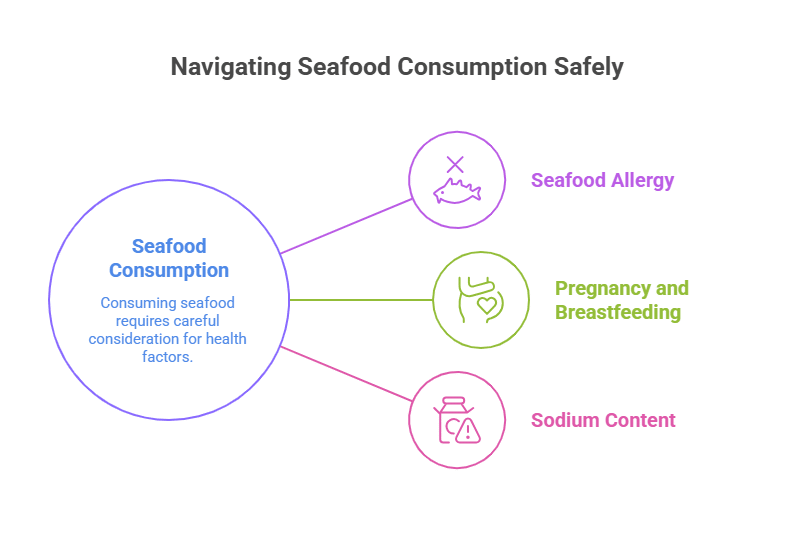
- Seafood Allergy: Seafood is among the top food allergens. People with seafood allergies should obviously avoid it regardless of the iodine content.
- Pregnant or breastfeeding? Iodine needs to go up. Seafood can help meet increased demand but consult your doctor.
- Watch sodium in precooked or seasoned seafood and look for clean, frozen or fresh options with minimal additives.
Conclusion: Seafood as a Smart, Iodine-Rich Superfood
Seafood is a rich source of this essential nutrient, iodine but it also provides many other health benefits. For those looking to maintain proper thyroid function and support overall wellness, seafood can be a tasty and healthful addition to the diet.
As always, if you have dietary restrictions or allergies, especially shellfish or fish allergies, consult your healthcare provider before adding to your meals.
Frequently Asked Questions (FAQs)
1. Is iodine better from seafood or iodized salt?
Both are good sources but seafood provides protein, omega-3s and antioxidants, making it a more nutrient-dense option. Salt is effective but often reduced in clean or low-sodium diets.
2. Can I get too much iodine from seafood?
It’s unlikely. You’d have to eat several large servings daily even to come close to the upper limit. Seafood is considered a safe, natural source of iodine when eaten in moderation.
3. Are there people who should avoid seafood as a source of iodine?
Yes. Anyone with a shellfish allergy should avoid seafood. Also, people with certain thyroid conditions (like hyperthyroidism) should talk to their doctor about iodine intake.
4. How do I know if I’m low on iodine?
Common signs include
Fatigue
Feeling cold all the time
Slow metabolism
Brain fog
Thinning hair
Dry skin
Swelling in the neck (goiter)
If you’re unsure, talk to your healthcare provider. They can run simple tests to check your levels.

